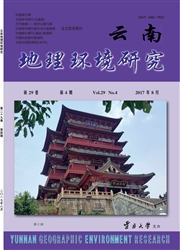

 中文摘要:
中文摘要:
依据物种为对光照不同要求,划分海南岛热带林物种为不同喜光性的功能群,应用NMS、非参数单因素方差分析法(ANOVA)和多重比较法(Post Hoc Tests)等方法,分别研究各功能群与环境因子的关系,及其随热带林不同干扰类型和恢复时间的变化差异。结果表明:(1)海南岛热带山地雨林以耐阴性功能群组成为主,主要分布于沟谷和坡地老龄林中,与热带林的恢复时间、土壤石砾含量、pH、全P和速效K成正相关,与海拔高度和土壤有机质成负相关性。(2)喜光性功能群主要存在于次生林中,与干扰类型、土壤速效和全N成负相关性,与采伐强度成正相关性。(3)随着刀耕火种后山地雨林次生林的恢复时间增加,强耐阴性功能群的分布增加,而喜光性功能群的分布则减少。(4)随着人工采伐后山地雨林次生林的恢复时间增加,各功能群的分布变化不明显。
 英文摘要:
英文摘要:
Based on the field investigations and species light -demanding, plant species in the tropical montane rain forest were classified into 6 functional groups. NMS (nommetric multidimensional scaling), one - way ANOVA and Post Hoc Tests were used to analyze their change with different environmental factors and test their change with disturbance types and recovery time. The results showed: (1) Tropical forest, espcially ravine and mountain slope old - growth forest stands, was mainly composed of shade - tolerant functional groups, which positively correlated with recovery time, stone content, pH, total P and available K, and negatively with elevation and soil organic matter. (2) Shade -intolerant functional groups were mainly distributed in secondary forest stands, which were negatively correlated with disturbance types, soil available N, total N, and positively with logging intensity. (3) With the increasing of recovery time after shifting cultivation, the distribution of shade - tolerant functional groups increased, while shade -intolerant functional groups decreased. (4) With the increasing of recovery time after logging, the distribution of functional group had little change.
 同期刊论文项目
同期刊论文项目
 同项目期刊论文
同项目期刊论文
 期刊信息
期刊信息
